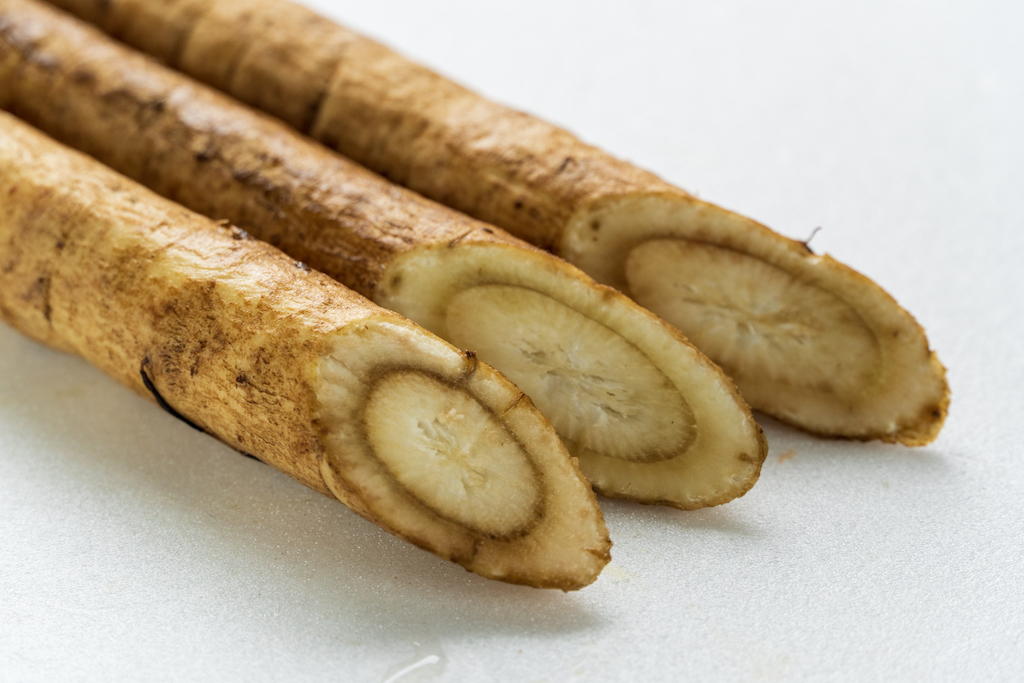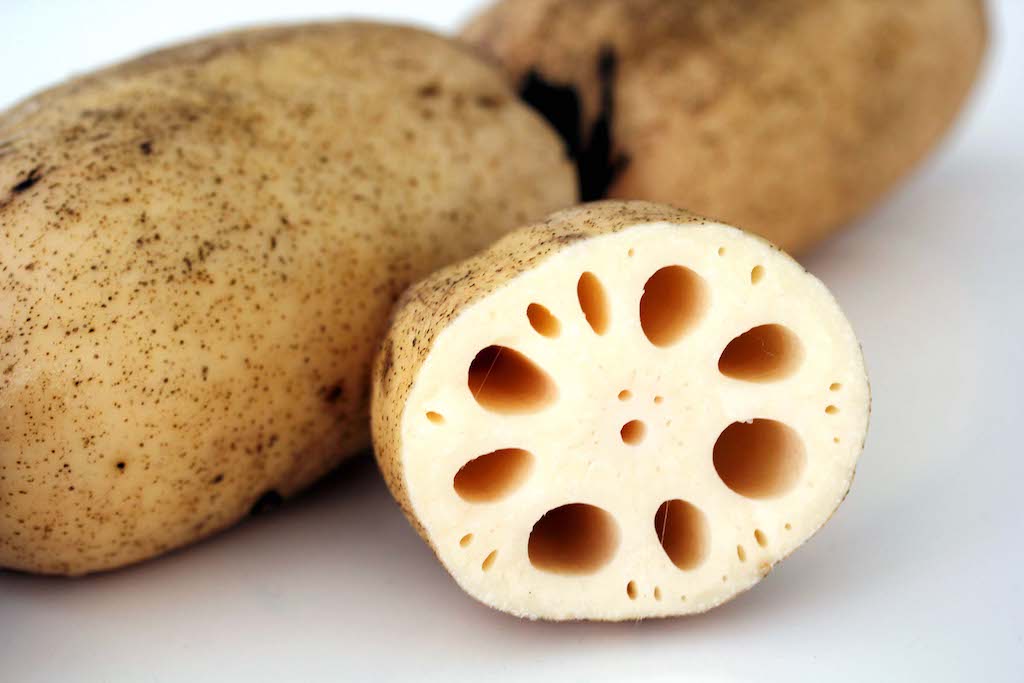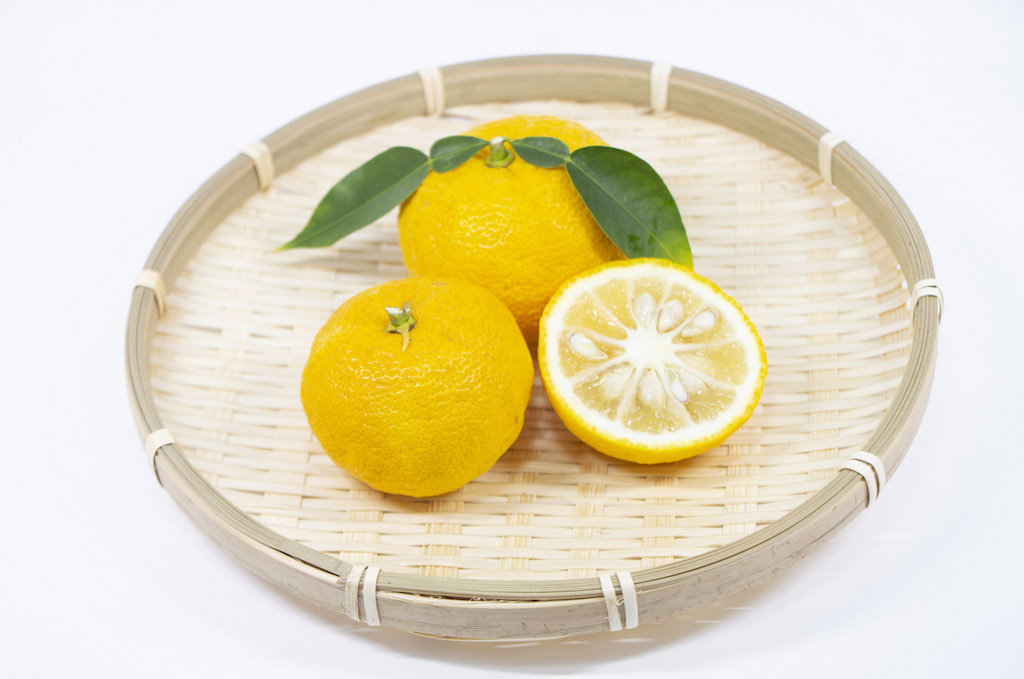What Is Gobo (Burdock Root)?
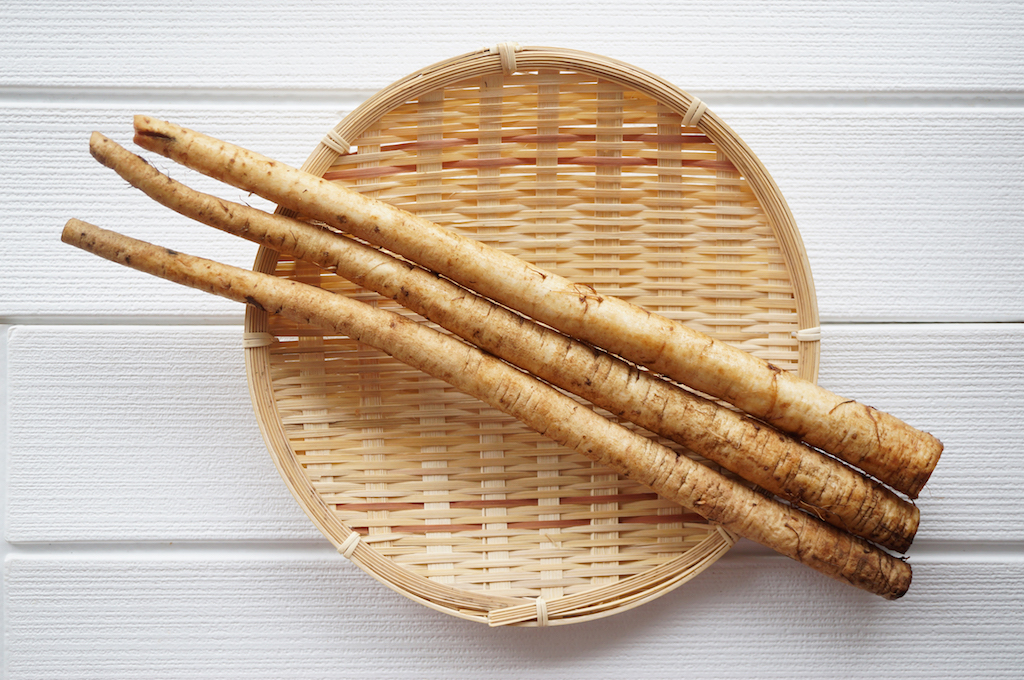
Gobo (gobo root) is a term for Japanese burdock root. It’s plant in the Aster family, and its edible part is root. It is said that the origin places of gobo are Asia and Europe.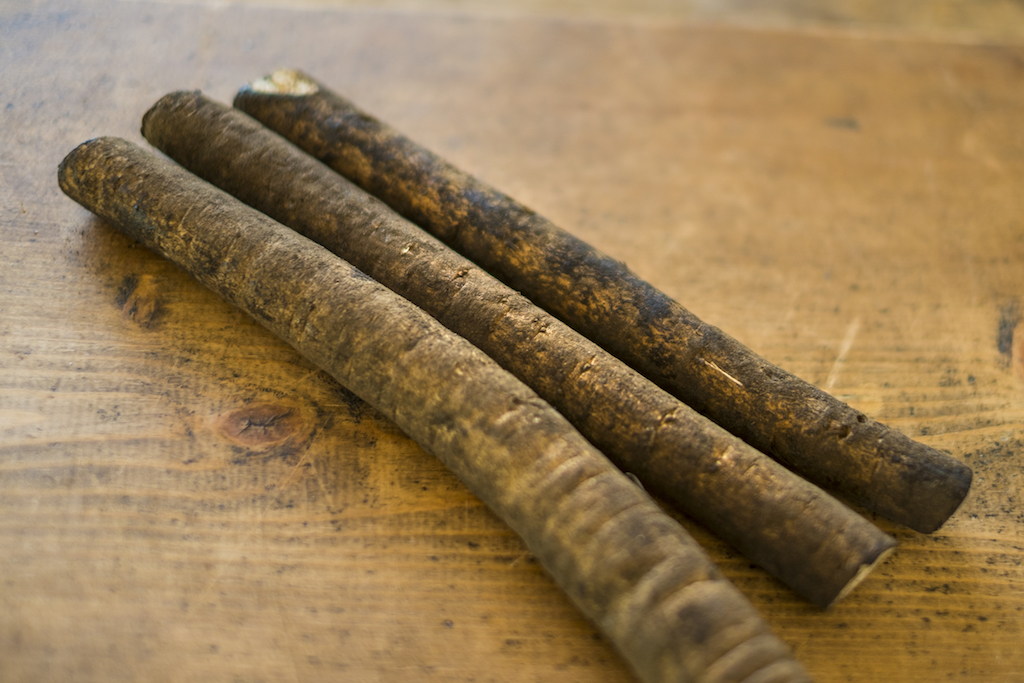 ▲Gobo with Mud
▲Gobo with Mud
Gobo was introduced to Japan as a herb from China during the Heian period. Although gobo grows naturally all over the world, people in those countries never eat it. Only Japan had made it edible by breeding and cultivating various varieties.
What Does Gobo Taste Like?
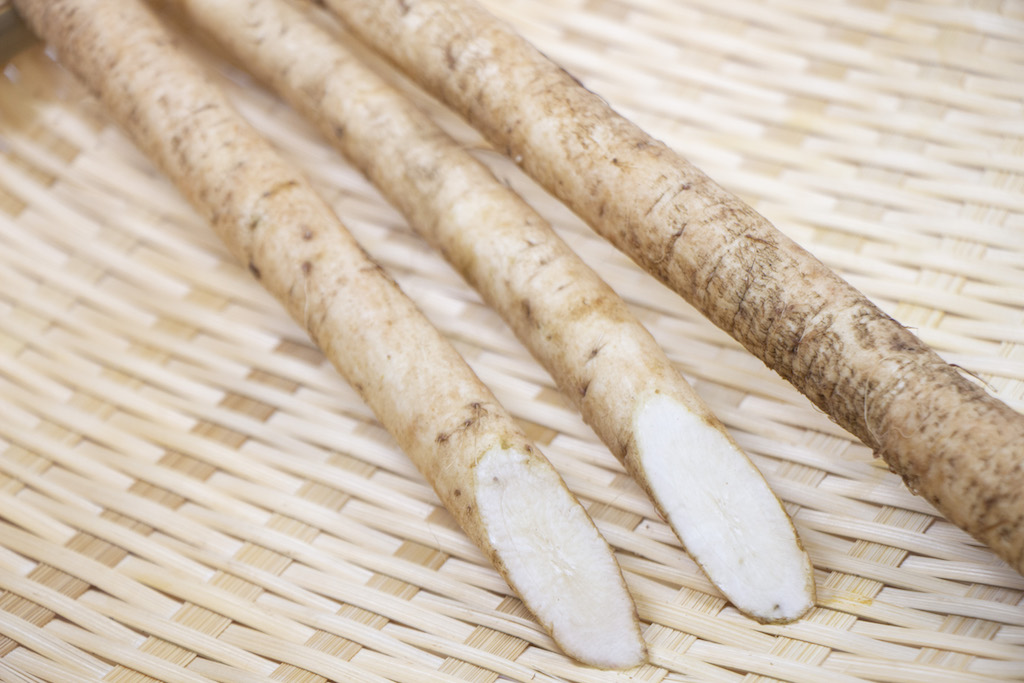
The taste of gobo is light and simple. It’s neither sweet nor bitter.
Gobo’s flavor is very unique which is kind of like earthy peculiar to root vegetables. Despite of the unique flavor, it doesn’t ruin the flavor of other ingredient in a dish, but could add great scent to it.
The texture of gobo is crunchy and chewy. You would feel a little fibrous texture at the same time. The great part of gobo is that the crunchy texture does not disappear even if it’s heated for a long time.
How Is Gobo Used?
Gobo can be used all kinds of dishes including stir-frying dish, deep-frying dish, soup dishes, stews, and salad. Due to its light taste, gobo matches various types of seasonings too. You can enjoy the unique flavor and crunchy texture with those popular dishes below.
Kimpira Gobo
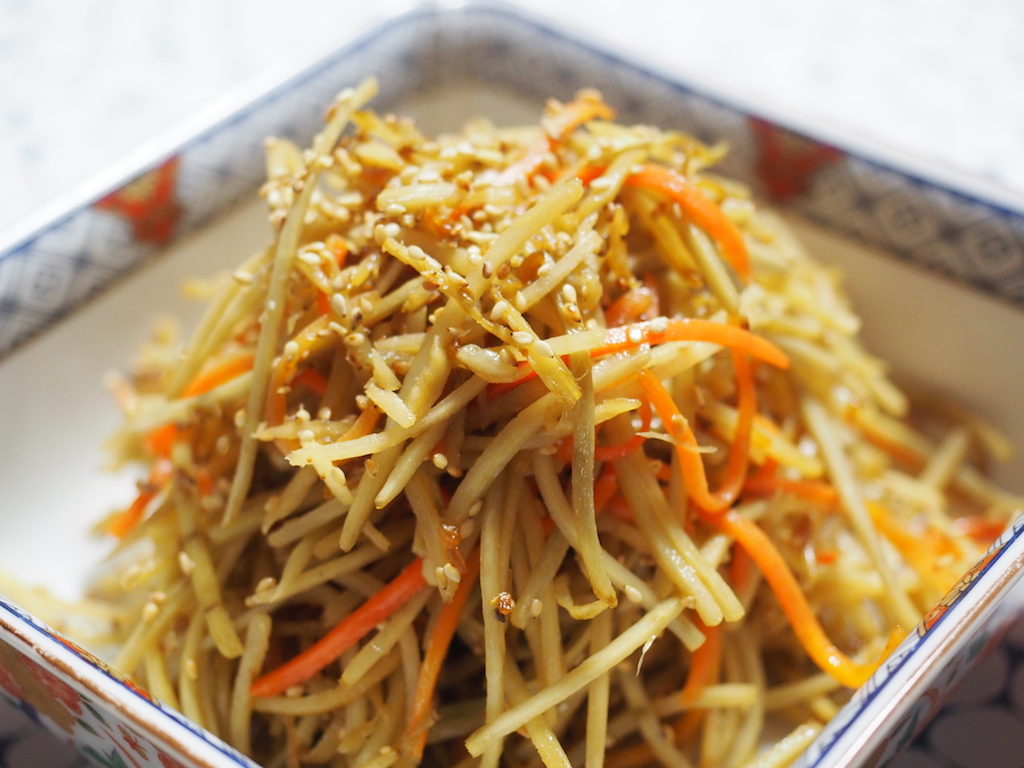
Kimpira is a traditional Japanese dish made by stir-frying vegetables. It has a sweet soy flavor. Speaking of kimpira, it’s often about the one using gobo as a main ingredient although other root vegetables are also used for kimpira. The combination of gobo and carrot is really popular material for it.
Gobo Tempura
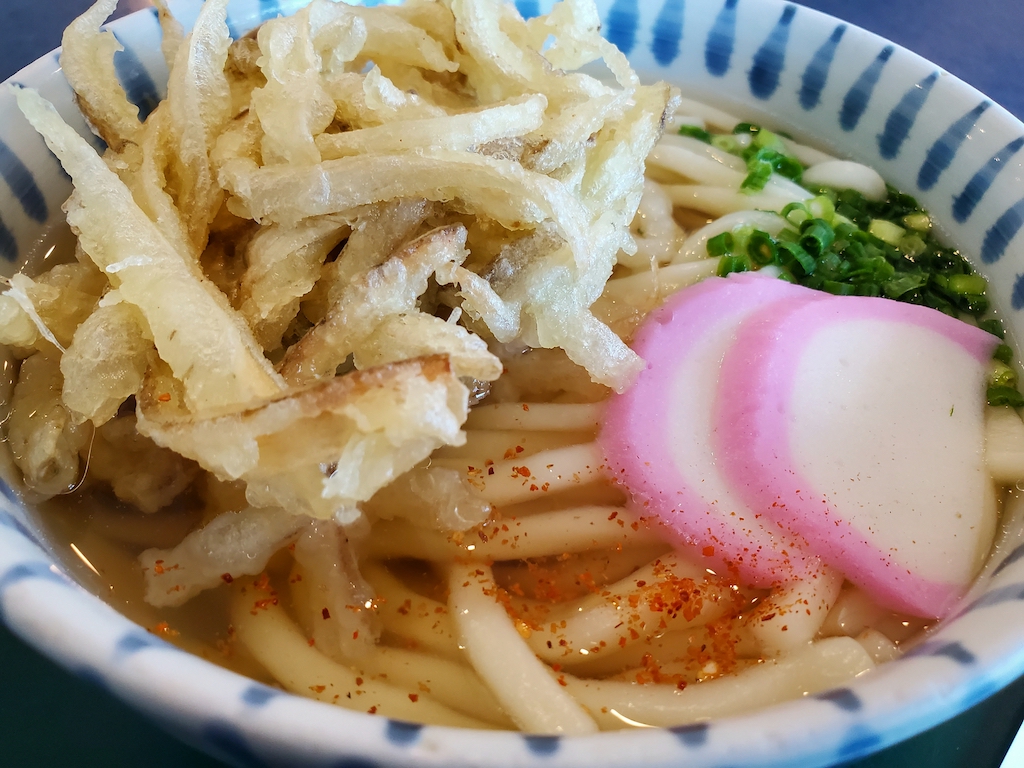 ▲Gobo Tempura with Udon Noodles
▲Gobo Tempura with Udon Noodles
Thinly sliced gobo is used for kakiage tempura (tempura is made by covering materials in batter and frying them in oil). The fresh flavor of oil matches so well with the unique flavor of gobo.
Gobo Salad

Salad is one of the best dishes for gobo. Usually boiled gobo is used and it’s mixed with boiled carrot or other vegetables such as cucumber. For the flavor of gobo salad, mayonnaise based sauce is very popular.
Ton-Jiru (Miso Soup with Pork and Vegetables) / Kenchin-Jiru (Soup with Tofu and Vegetables)
Both of them are Japanese traditional soup dishes contains various kind of vegetables. Using gobo is not essential all the time but it definitely makes the soup more delicious by giving an exquisite flavor.
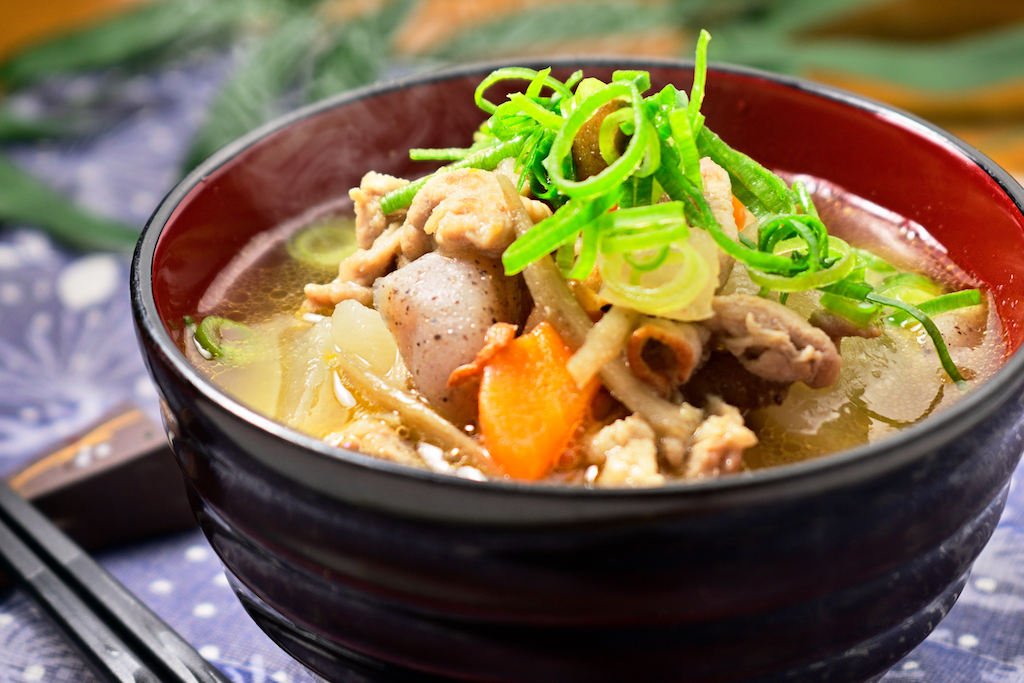 ▲Ton-Jiru
▲Ton-Jiru
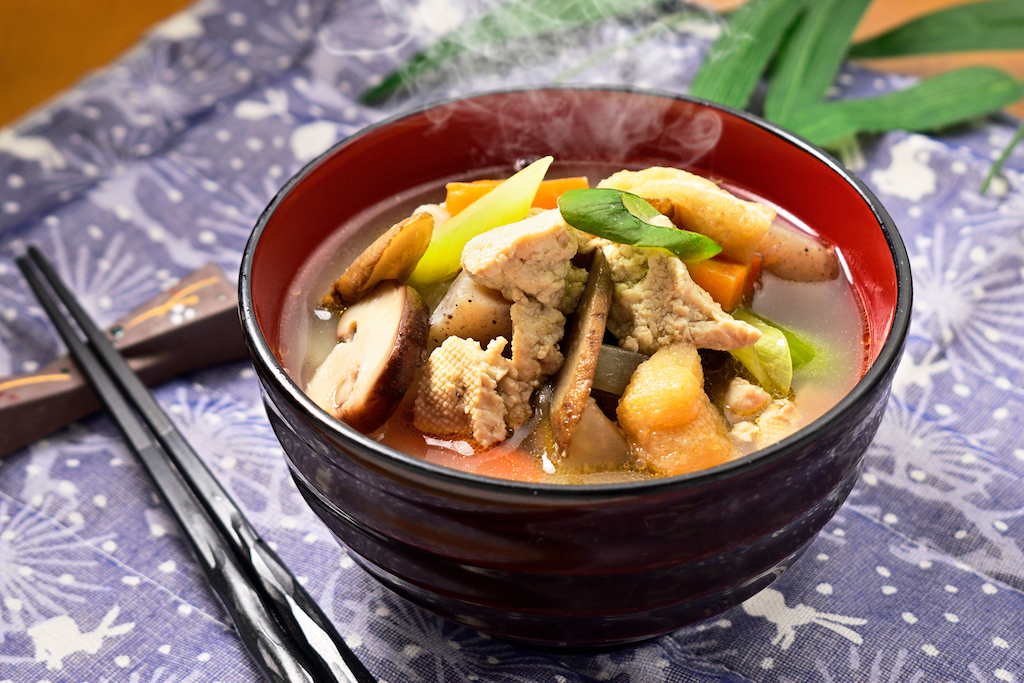 ▲Kenchin-Jiru
▲Kenchin-Jiru
Simmered Dish with Gobo
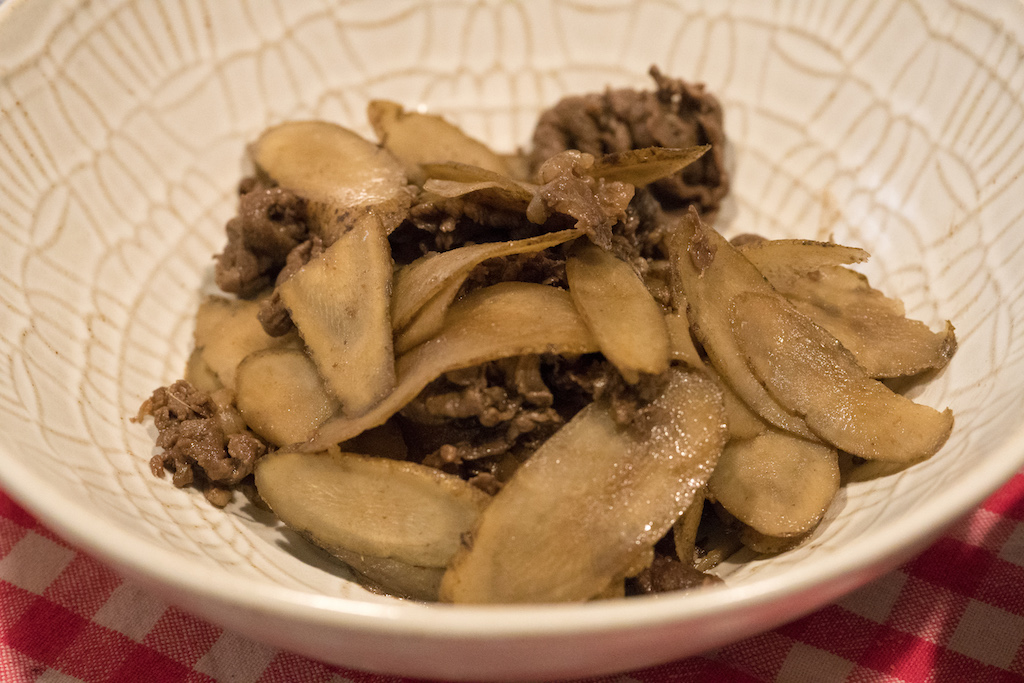 ▲Shigure-ni with Gobo
▲Shigure-ni with Gobo
Gobo is often added to the dish called shigure-ni (beef that has been cooked in soy sauce, sugar, and ginger). Sliced gobo and beef absorb the sweet and salty sauce well and get so tasty.
Takikomi-Gohan (Japanese Mixed Rice)
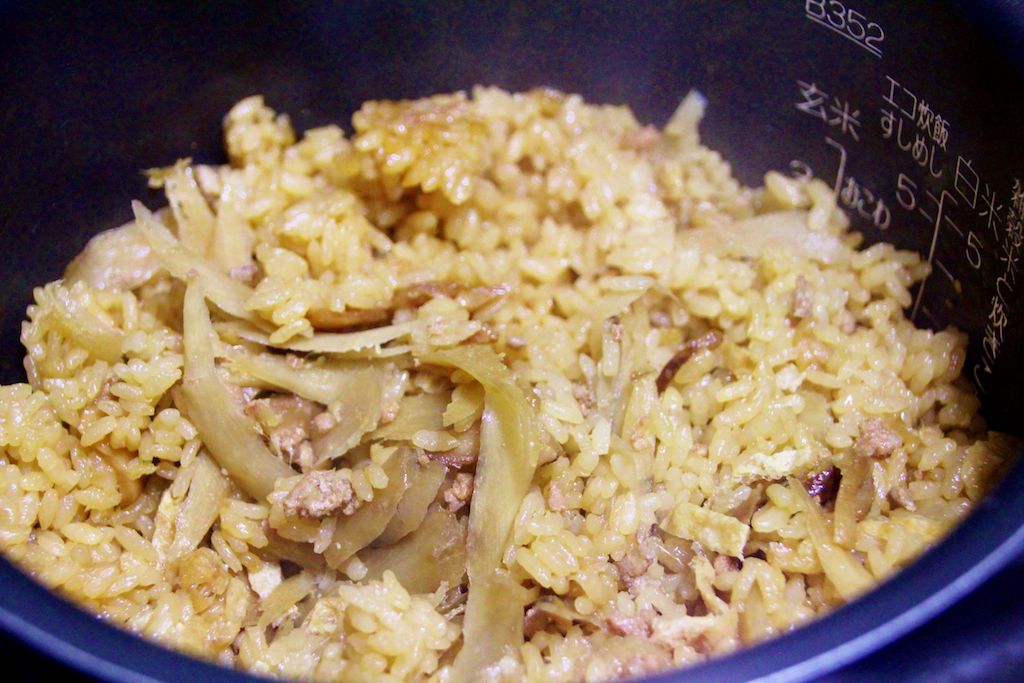 ▲Takikomi-Gohan with Gobo and Meat
▲Takikomi-Gohan with Gobo and Meat
The ingredients in takikomi-gohan is totally depends on your favor. So you can put any type of meat, fish, vegetables, and mushrooms. Gobo is one of the most popular ingredient for this dish.
Preparation for Gobo
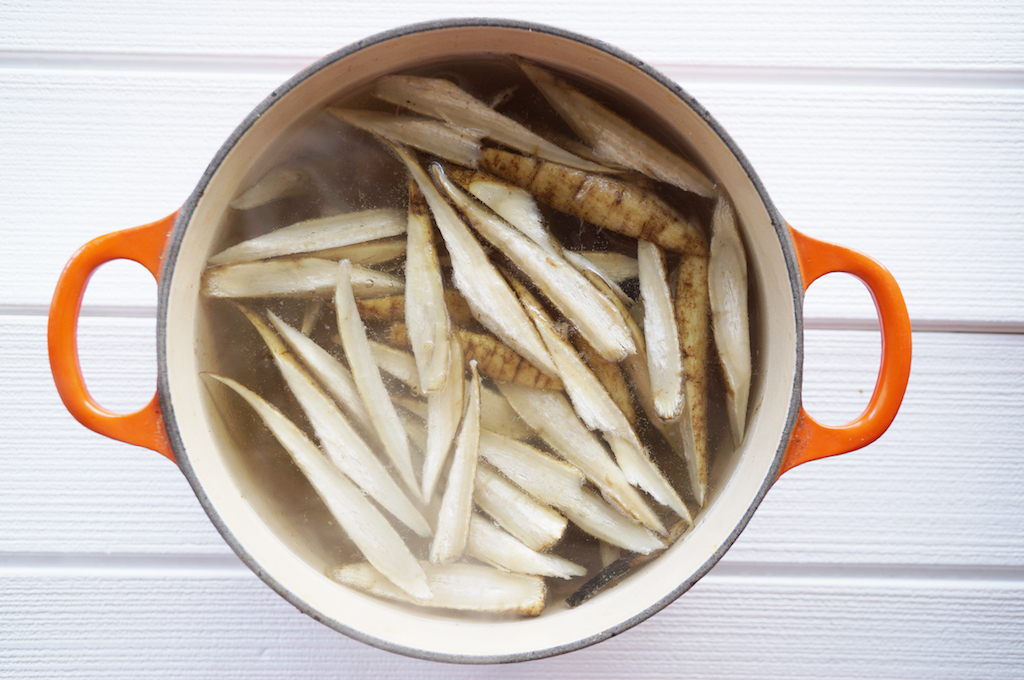
Japanese people often soak gobo in water for a while before cooking it in order to remove its astringent taste and prevent discoloration. However, this preparation is not always necessary because nutrients contained gobo could be melted in water.
If you really want to make the appearance of gobo white and beautiful (for example when you make salad), you should peel gobo well and soak it in water or put a little bit of vinegar in a pot while boiling it.
The correct preparation for gobo is lightly rub the surface of it with a scrubbing brush. Then scrape off the skin of gobo (especially the place where dirt is conspicuous) with the back of a knife. It’s totally fine with some skin left.
Nutrition of Gobo
Below you will find the nutrition information for a 3.5 oz (100g) of gobo:
・Calories: 65kcal
・Water: 81.7g
・Total Carbohydrates: 15.4g
└Dietary Fiber: 5.7g
・Total Fat: 0.1g
・Protein: 1.8g
・Minerals
└Sodium: 18mg
└Potassium: 320mg
└Calcium: 46mg
└Magnesium: 54mg
└Other Minerals: 64mg (iron, zinc, etc)
・Vitamins: 4.5mg (vitamin C, vitamin E, etc)
What Are the Benefits of Eating Gobo
Gobo contains abundant dietary fiber which supports the functions of the intestines. It’s said that dietary fiber accelerate to excrete waste matter from the body so that it helps relieve constipation.
In addition, gobo contains chlorogenic acid (a type of polyphenol) abundantly, and you can expect antioxidant effect from it.
Can I Eat Gobo Raw?
Yes, you can eat gobo raw.
Even Japanese people tend to think gobo has to be cooked with heat. It’s because the raw gobo has hard texture and its flavors are bitterness and astringency (called “Egumi”).
Although soaking gobo in water could lose some nutrients, it’s better to soak gobo in vinegar water for a while if you eat it raw so that you can remove some “Egumi”.
By the way, there are some specific type of gobo called “salad gobo” which has already been prepared for use in salads.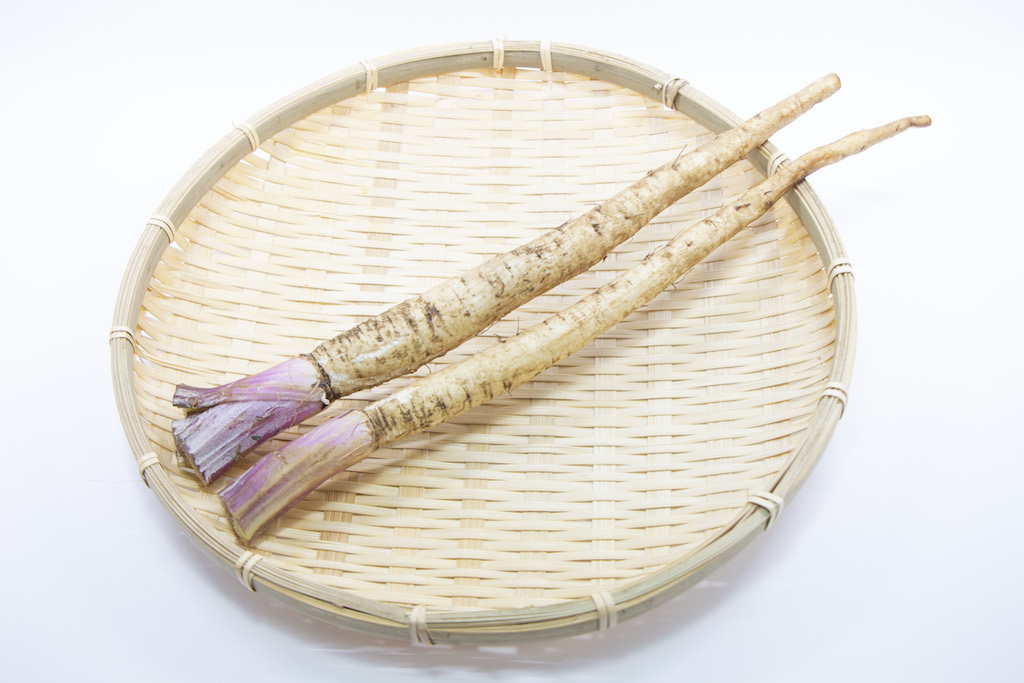 ▲Salad Gobo
▲Salad Gobo
Do You Peel Gobo?
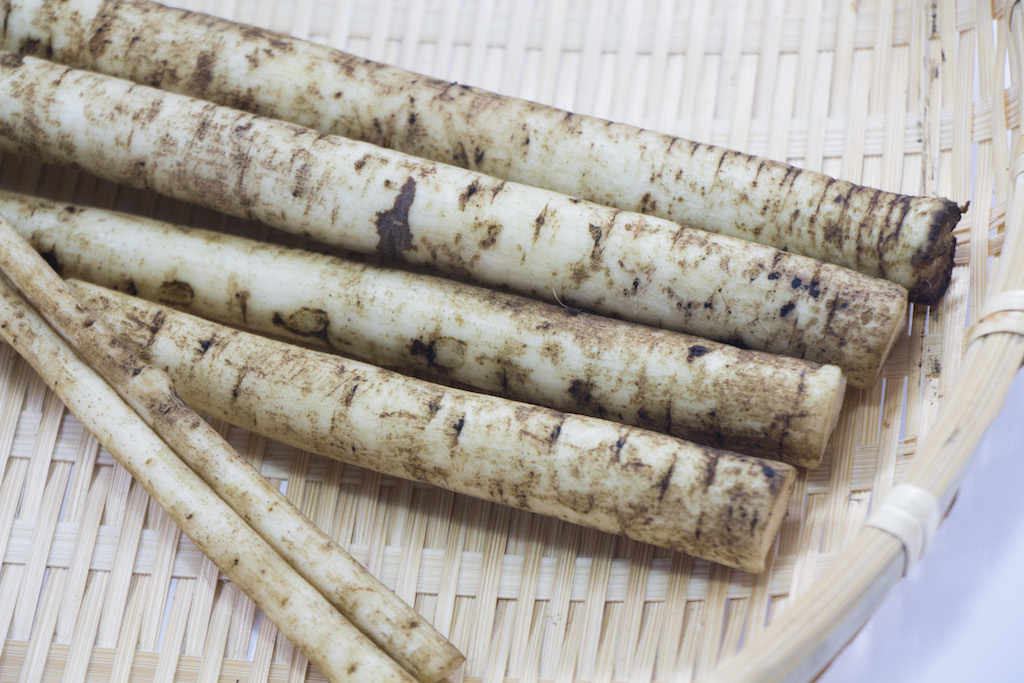
You can peel gobo completely, however, it’s highly recommended to leave a little skin because the skin is full of nutrition actually. Also, the skin has great flavor (aroma) and umami (taste).
But extra or terrible dirt on gobo must be removed, so please wash it water very well and scrape off the skin with the back of a knife or a scrubbing brush as needed.
I would say it’s better not to use peeler which could peel the skin completely, but those who really care about the skin can peel it all off.
Gobo Recipes
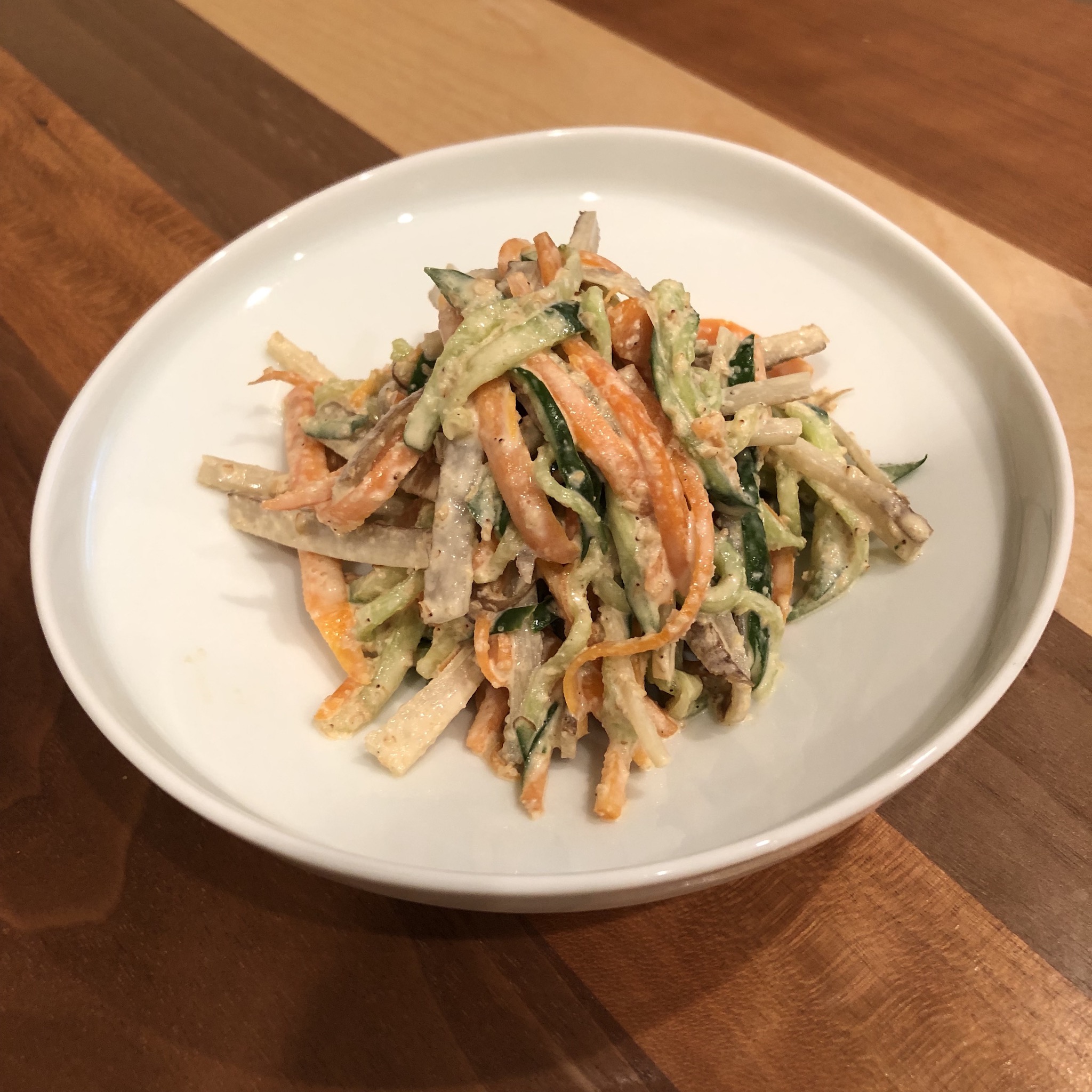
Gobo Salad with Sesame Miso-Mayonnaise Dressing
The most crunchy delicious salad is absolutely this! If you don’t have miso, please add soy sauce instead.
GET THE RECIPE
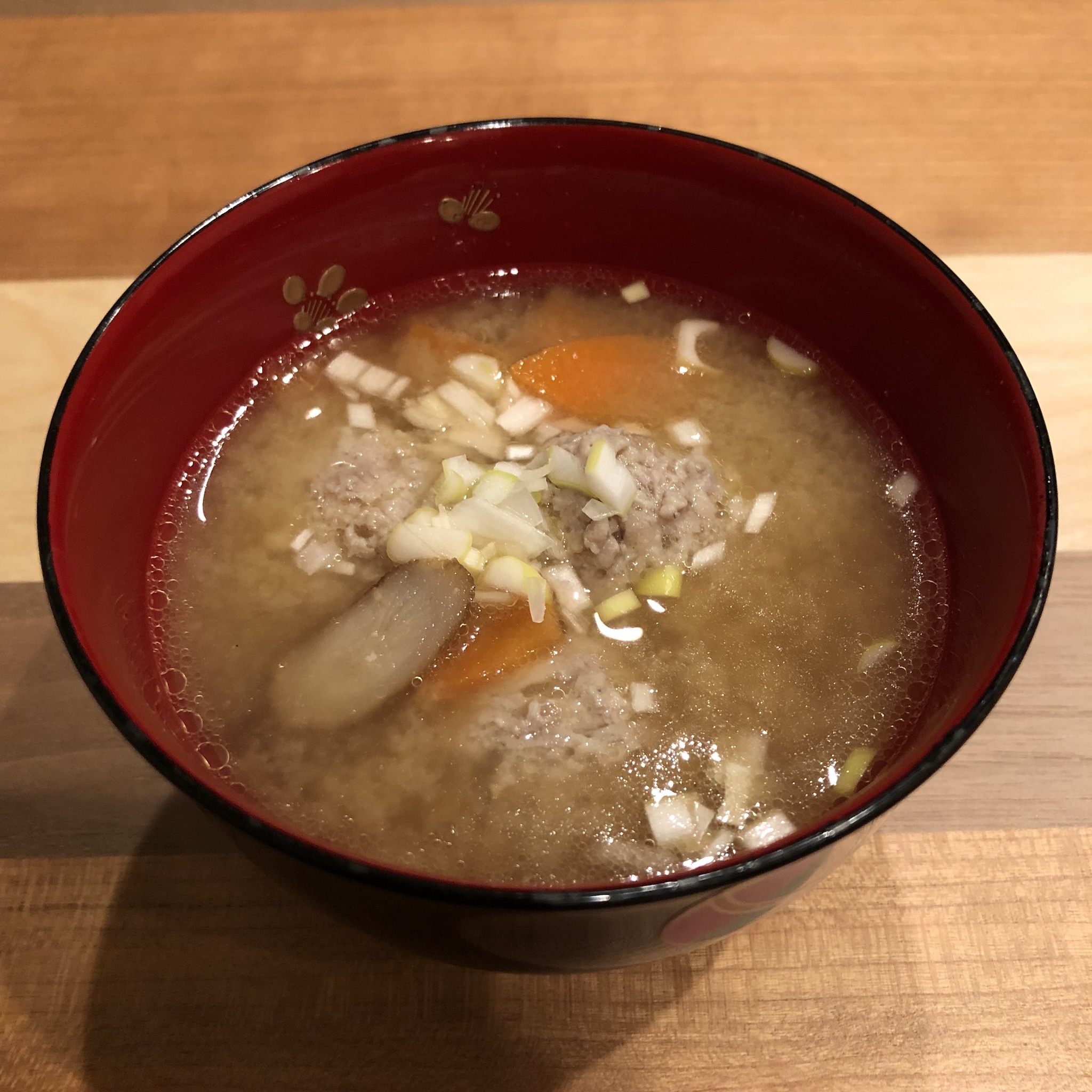
Chicken Meatballs with Gobo Miso Soup
Since I have been making various kinds of miso soup for my blog, let me introduce this for gobo recipe. Meatballs can be replaced as just simple meat, and you can add whatever your favorite vegetables actually. If you put pork, it’s going to be perfect ton-jiru!
GET THE RECIPE

